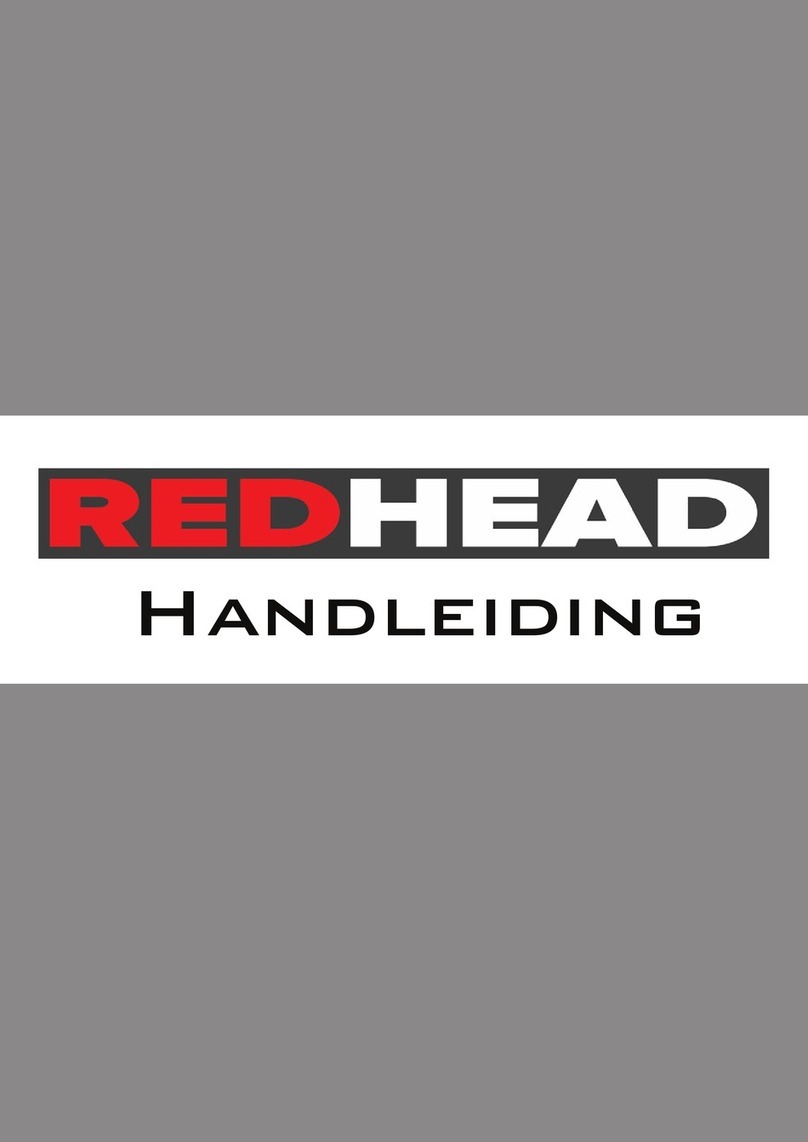
5. Maintenance
Disconnect the tool from the compressor before adjusting, clearing jams, servicing &maintenance, relocating and during non
operation.
Regular lubrication, if your tool without using the in-liner automatic oilier, place 2 or 6 drops of pneumatic tool oil into the air
inlet before each work day or after 2 hours of continuous use depending in the characteristic of work piece or type of fasteners.
Air-operated tools must be inspected periodically, and worn or broken parts must be replaced to keep the tool operating
safely and efficiently. Check and change all worn or damaged O-ring, Seals, etc. Tighten all the screws and caps to avoid
personal injury. This should be done by an expert.
Make regular inspection for free movement of trigger, spring and safety mechanism to assure safe system is complete and
functional: no loose and missing parts, no building or stocking parts.
Keep magazine and nose of tool clean and free of any dirt lint or abrasive particles.
When temperatures are below freezing, tools should be kept warm by any convenient, safe method.
6 Troubleshooting (See Table 1)
The following chart lists common issues and solutions. Please read it carefully and follow all instructions closely.
WARNING!
Potential hazard that will result in serious injury or loss of life.
If any of the following symptoms appear while the tool is in use, turn it off and disconnect it from the air supply immediately.
Failure to heed this warning will result in serious personal injury.
Disconnect the tool from the air supply before making any adjustments.
Repairs must be performed by a qualified service technician only.
tool or in trigger area
1. O-ring in trigger valve is damaged.
2. Trigger valve head are damage.
3. Trigger valve stem, seal or O-ring are damaged.
1. Check and replace O-ring.
2. Check and replace.
3.Check and replace trigger valve stem, seal
or O-ring
Air leak near bottom of
tool.
1. Loose screws.
2. Worn or damaged O-rings or bumper.
1. Tighten screws.
2. Check and replace O-rings or bumper.
and cylinder cap.
2. Worn or damaged O-rings or seals.
2. Check and replace O-rings or bumper.
Blade driving fastener
too deep.
1. Worn bumper.
2. Air pressure is too high.
1. Replace bumper.
2. Adjust the air pressure.
Tool does not operate
well: can not drive
fastener or operate
sluggishly.
1. Inadequate air supply.
2. Inadequate lubrication.
3. Worn or damaged O-rings or seals.
4. Exhaust port in cylinder head is blocked.
1. Verify adequate air supply.
2. Place 2 or 6 drops of oil into air inlet.
3. Check and replace O-rings or seal.
4. Replace damaged internal parts.
Tool skips fasteners. 1. Worn bumper or damaged spring.
2. Dirt in front plate.
3. Dirt or damage prev
ents fasteners from moving
freely in magazine.
4. Worn or dry O-ring on piston or lack of Lubrication.
5. Cylinder covers seal leaking.
1. Replace bumper or pusher spring.
2. Clean drive channel on front plate.
3. Magazine needs to be cleaned.
4. O-ring needs to be replaced.And lubricate.
5. Replace Sealing washer.
Tool jams. 1. Incorrect or damaged fasteners.
2. Damaged or worn driver guide.
3. Magazine or nose screw loose.
4. Magazine is dirty.
1. Change and use correct fastener.
2. Check and replace the driver.
3. Tighten the magazine.
4. Clean the magazine.
Note: Repairs should be carried out by a qualified person.


























